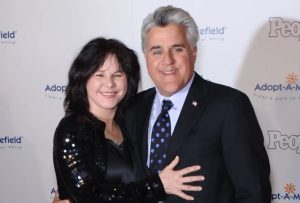LPGA and USGA update gender policies, impacting some transgender golfers
4 min readTwo golf governing bodies – the LPGA and the USGA – announced new guidelines Wednesday requiring golfers to be female at birth or to have transitioned pre-puberty to be eligible to compete in women’s events. Both policies will take effect in 2025.
Athletes assigned female at birth are eligible to compete on the LPGA Tour, Epson Tour, Ladies European Tour and USGA championships and team events. Meanwhile, players assigned male at birth and who have gone through male puberty are not eligible.
“Our policy is reflective of an extensive, science-based and inclusive approach,” said LPGA Commissioner Mollie Marcoux Samaan in a press release. “The policy represents our continued commitment to ensuring that all feel welcome within our organization, while preserving the fairness and competitive equity of our elite competitions.”

In order to compete in LPGA events, transgender women must be able to prove that they have not experienced any part of male puberty beyond stage two on the Tanner scale, which the Cleveland Clinic says is a classification system healthcare providers use to track the development of secondary sex characteristics in children during puberty, or before the age 12, among other criteria – such as continuously maintaining the “concentration of testosterone in their serum below 2.5 nmol/L,” the LPGA stated in its policy.
The USGA, the governing body of golf in the United States, also announced Wednesday that it would be implementing similar guidelines next year, namely that players can compete at women’s events only if they were assigned female at birth or have transitioned prior to going through male puberty.
The USGA defines male puberty in the same terms as the LPGA.

“Our updated policy reflects a thoughtful and thorough process during which the USGA consulted with leading medical professionals from around the world.”
In their press releases, both organizations cited the need to ensure “competitive integrity” at the highest levels of the sport.
Transgender golfer Hailey Davidson is perhaps the most high-profile player who would be impacted by the new guidelines.
Davidson competed in LPGA qualifying as recently as October, around the same time that reports surfaced of 275 female players reportedly signing a letter asking governing bodies to change policies that allowed athletes assigned male at birth to compete in women’s events, according to The Associated Press, citing OutKick.
“Can’t say I didn’t see this coming,” Davidson wrote in an Instagram story Wednesday in reaction to the announcement.
“All the silence and people wanting to stay ‘neutral’ thanks for absolutely nothing,” she added.
“This happened because of all your silence.”
The LPGA said that its policy was “informed by a working group of top experts in medicine, science, sport physiology, golf performance and gender policy law” which “advised that the effects of male puberty confer competitive advantages in golf performance compared to players who have not undergone male puberty.”
Whether transgender women, especially those who have experienced male puberty, have an athletic advantage over cisgender women, even after extended hormone therapy, has been a topic of debate in recent years, complicated by a lack of scientific research and scientific consensus.
Particularly as, like cisgender athletes, trans athletes’ abilities vary.
Dr. Joshua Safer, executive director of the Mount Sinai Center for Transgender Medicine and Surgery, told CNN in May that many elite sports associations are trying to craft policies without meaningful data on how trans athletes perform in their specific categories, such as soccer or basketball.
“If you’re trying to be ‘fair’ – however fair is defined – then you need to look at individual athletic activities directly,” Safer said. “It would be a matter of taking transgender people who participate in sports and looking at them before and after some of their treatments and really measuring differences, especially in common sports.”
A 2021 study published in the British Journal of Sports Medicine found that trans women have comparable levels of hemoglobin – which help blood cells carry oxygen – to cisgender women; their strength, lean body mass and muscular area also markedly decreased after 12 months of hormone therapy, though were observed to be higher than those of cisgender women.
Another scientific review published in 2023 found that sex differences do develop following puberty, but many are “reduced, if not erased, over time by gender-affirming hormone therapy.”
Qualities such as height and limb length appear to be “less malleable,” the study said, though it pointed out that there are no efforts to restrict cisgender athletes who are exceptionally gifted physically, arguing “the exclusion of trans individuals also insults the skill and athleticism of both cis and trans athletes.”
“Unfortunately, there is a dearth of research on cis and trans gender differences,” added the author of that review, DJ Oberlin, in the journal Frontiers in Sports and Active Living.
Source: CNN





